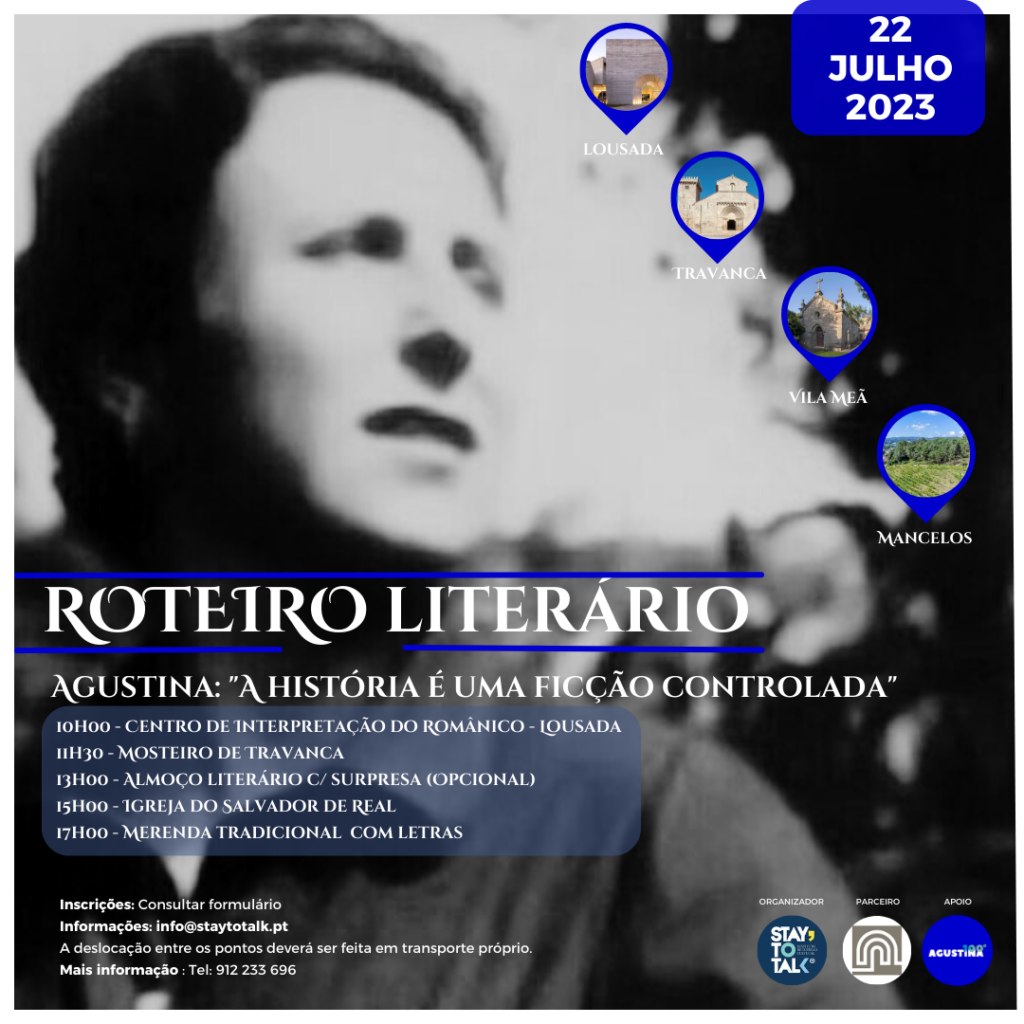When we read the works of Agustina Bessa-Luís, we wander between the urban space and the rural environment, realities experienced by the author at different moments of her life.[1] Through these scenarios, she observed human behavior and the social dynamics inherent in each one of them like no one else, but it would be through the countryside that she would find the food for her writing.
The countryside within its apparent tranquility can appear as an extremely rich plot in interpersonal relationships, customs and socio-cultural dynamics. The harshness that we sometimes find in these places attributes to those who lived there a pragmatism, but also a power dispute over agrarian property and everything that comes from it.
This was the perfect scenario for Agustina to structure the plot of “The Sibila” (1954). A novel where the power of the land and rurality vibrates in each page, transporting us to real landscapes and characters with a touch of truth. Women and their capacity to manage assets, say houses and agricultural properties, is the key point that elucidates or makes us reflect on the strategies used by a group of women in managing a web of family relationships and in negotiating with different elements outside the home.
“(…) Maria, e logo depois Quina, litigavam como se jogassem. A primeira ficava reduzida a um farrapo, cegava-se estorcia de paixão, morria e revivia a cada contestação e a cada minuta. Esquecia a razão, e arruinava-se prazenteiramente até ao último ceitil; até ao último momento esperava vencer e recuperar tudo, e, se lhe explicavam miudamente as impossibilidades desse resultado, não compreendia. Quina era diferente. Tinha grande fé nas artimanhas dos velhos advogados, achava que sempre, sem exceção, se pode iludir a lei. Cultivava-se em coisas de foro, fazia-se importuna, corria de um juiz a um influente e deste a um delegado, agia de modo próprio, desejava precipitar o lento esmoer da burocracia judicial, comprava testemunhas, impunha teorias, desprezava os legistas que não a favoreciam, e considerava letra morta os seus artigos. Era, enfim, calamitosa e insuportável. (…)” (Bessa-Luís, 2019, p.43).
It is at Quinta do Paço, in Travanca, that we feel the cue, the most picturesque description and the wandering of the characters along the levadas. It was here that Agustina found the setting, experienced by her in the first person, as the home of her paternal grandparents and aunts, for one of her great literary works.
Those who walk along the paths leading up to Paço, where you can feel the rumble of the train in the distance, will better understand Quina, Francisco Teixeira, Germa and even Agustina, but will also feel the presence of the water flowing in the creek or flowing into the tank. near the threshing floor.
Is it time to discover all these spaces?
We believe so!
That’s why we propose a Literary Route dedicated to the life and work of Agustina, as well as the history that lies behind the stones that make up the region’s Romanesque heritage.
Come with us to discover the peculiar places of this great writer from Amarante who, among many of her wise and daring words, says:
“A história é uma ficção controlada.”
Literary Walk Program:
Date: July 22, 2023
Hours: 10:00 am to 6:00 pm
10:00 – Guided Tour Centro Interpretativo do Românico – Lousada
11:30 – Mosteiro de Travanca
13:00 – Free Lunch or Literary Lunch
15:00 – Igreja do Salvador de Real
17:00 – Traditional Snack with Letters
Mandatory registration, available through the following link:
https://forms.gle/ViwNKfbjZ4GWBd5aA
As you travel the @Rota dos Artistas, share your reflections and photographs with us.
Follow us on Instagram and Facebook
Use #rotadosartistas or tag @rotadosartistas to follow your journey!
Bessa-Luís, A. (2019). A Sibila. Relógio D’Água Editores. 34ª edição.
Sofia Mesquita,
Stay to Talk Instituto de Imersão Cultural



